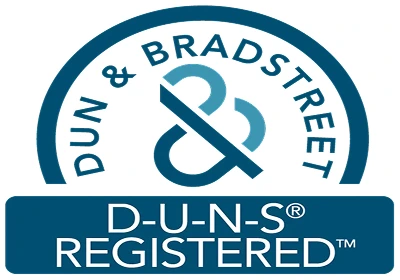
US.: +1-252-477-1362
UK.: +44-203-957-8553
AUS.: +61-8-7924-7805
INDIA: +91-848-285-0837

Published Date : 26 Dec, 2025
Enzyme Linked Immunosorbent Assay (ELISA) is an immunoassay used to identify proteins, peptides, antibodies, and hormones. ELISA assay has application in biotechnology medicine, as a diagnostic tool, which detects color change to identify a target substance and measur... View more
Published Date : 26 Dec, 2025
An animal model is a non-human species used in biomedical research because it can mimic aspects of a biological process or disease found in humans. Animals are essential for research that seeks to understand disease progression and treatments. These models are being u... View more
Published Date : 26 Dec, 2025
Healthcare providers rely on a variety of tools to diagnose various diseases or conditions and guide treatment decisions. Among the most common and widely used are in vitro diagnostics (IVDs). IVD helps detect diseases or infections, and can be used to monitor overall... View more
Published Date : 26 Dec, 2025
Noninvasive prenatal testing (NIPT) is also known as noninvasive prenatal screening (NIPS). It is a procedure used to determine the chromosomal abnormalities or disorders of the fetus which generally occur due to missing or an extra copy (aneuploidy) of a chromosome. ... View more
Published Date : 26 Dec, 2025
Trypsin is a proteolytic enzyme that aids in digestion. Inactive trysinogen formed by the pancreas gets converted into active trypsin in the small intestine. Trypsinogen, along with other proetinases like pepsin and chymotrypsin, breaks down protein from food into ami... View more
Published Date : 26 Dec, 2025
Healthcare testing services are invented, and developed in the laboratories. During pharmaceutical production and research and development, healthcare testing in labs is required at practically every stage including preclinical, clinical, and manufacturing. It is used... View more
Published Date : 26 Dec, 2025
Pyrogen testing is detection of pyrogen in pharmaceutical drugs and devices. The contaminated devices or drugs when introduced in body can cause fever, shock, inflammation, and other problems. Pyrogen testing consists of kits, reagents, and instruments, which enable p... View more
Published Date : 26 Dec, 2025
Enteric infection is a type of intestinal disease that causes symptoms ranging from mild gastroenteritis to systemic infections and severe diarrhea. According to WHO in 2017, Infectious gastroenteritis accounts for 1 billion cases of diarrhea globally and over 2 milli... View more
Published Date : 26 Dec, 2025
Hemoglobin A1c Testing Devices are used for diagnosis and monitoring of type 1 and type 2 diabetes. Hemoglobin A1c test results reflect the average blood sugar levels of an individual for the past two to three months. Increasing prevalence of diabetes is expected to p... View more
Published Date : 26 Dec, 2025
Sarcoma is a type of cancer, which occurs in connective tissues. Moreover, sarcoma is broadly classified into two types such as soft tissue sarcoma and bone sarcoma. Soft tissue sarcomas occur in tissues of blood vessels, nerves, tendons, muscles, fat, and lining of t... View more
Published Date : 26 Dec, 2025
Hospital-acquired infections are acquired by the patient under medical care. The most common types of hospital-acquired infections are urinary tract infections, bloodstream infections, Methicillin-resistant Staphylococcus aureus (MRSA), pneumococcal infections, and ga... View more
Published Date : 26 Dec, 2025
Liquid biopsy is an advanced non-invasive cancer diagnostic technique that uses bio-fluids such as blood, cerebrospinal fluid (CSF), plasma, and urine for detecting cancer. Liquid biopsy uses ... View more
Published Date : 26 Dec, 2025
Hematology is a branch of science dealing with diagnosis, treatment, and study of blood, blood components, and disorders related to blood such as blood malignant growth, frailty, hemophilia, and blood clumps. Hematological tests include in vitro diagnostic tests which... View more
Published Date : 26 Dec, 2025
Neurological disorder diagnostic tools are used for the diagnosis of various neurological disorders such as Alzheimer’s disease, Parkinson’s disease, Huntington’s disease and others. Neurological disorders can be diagnosed with the use of imaging and... View more
Published Date : 26 Dec, 2025
Blood stream infection is a condition in which the blood is detected with bacterial, fungal, or any other infection. This condition normally occurs when the infection enters the blood stream of any part of body through wound, injection or during any surgical procedure... View more
Published Date : 26 Dec, 2025
Automated antimicrobial susceptibility testing products are of two types, consumables and instruments. Consumables used in automated antimicrobial susceptibility testing includes culture & growth media, ready-to-use reagents, complete reagent kits, susceptibility ... View more
Published Date : 26 Dec, 2025
Glycated albumin refers to albumin that are bonded to glucose. Albumin is present in blood and body fluids organs, and functions to maintain the shape of cell and helps in the distribution of hormones, nutrients, and some drugs in the body. Glycated albumin has been d... View more
Published Date : 26 Dec, 2025
Helicobacter pylori is a bacteria that resides on the lining of human stomach. Helicobacter produces chemicals, causing inflammation of stomach, which progresses to peptic ulcer... View more
![]() Credibility and Certifications
Credibility and Certifications
Trusted Insights, Certified Excellence! Coherent Market Insights is a certified data advisory and business consulting firm recognized by global institutes.

860519526


9001:2015

27001:2022

